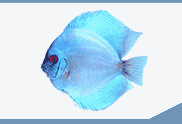

 |
||||||||||||
 |
||||||||||||
| Submission of Fish for Diagnostic Evaluation | ||||||
| Ruth Ellen Klinger and Ruth Francis-Floyd | ||||||
Introduction Determining the cause of a fish's illness and death can be difficult and frustrating for anyone who works with fish. Disease problems are commonly misdiagnosed and fish are often incorrectly treated with over-the-counter medications. A vicious cycle arises when the first treatment doesn't work and another one is tried, then another, and so on. Not only is this method a waste of time and money, but it usually does more harm than good to the fish in question. In addition, over-treatment, and the time lag from problem onset to submission could allow secondary infections (caused by agents that invade fish tissue after the damage by the initial agent has occurred) to take hold. Therefore, it is important to contact a diagnostic laboratory as soon as a disease problem is noticed to prevent misdirection in your fish health management plan. When fish become sick or die, the first response should be to find out why. The sooner the cause of their demise is determined, the faster a response can be taken to rectify the situation. Whether it is a pond, home aquarium, production farm, or a fish kill observed in the wild, it is imperative to respond quickly and correctly. The following is the proper procedure to submit fish and water samples to a diagnostic facility. Following these steps should result in a correct evaluation and the best recommendation for treatment. The Importance of History and Records When a client contacts a diagnostic laboratory, he/she will be asked a routine set of questions. Everyone involved should be knowledgeable about the system and animals that live there. Keeping records of water chemistry parameters, water changes, species in the system, and recent additions can accelerate processing of samples and provide the needed recommendation. The following is a selection of questions a fish health specialist is likely to ask, depending on the individual's situation. The client should be prepared to provide information on the following: General
Behavioral Changes:
Physical Changes:
Routine Procedures:
Previous Treatments:
more ... |
 |
|||||
| About Us :: Message Board :: Chat | |||||
| Library :: Photo Gallery :: Links & Resources :: Breeders & Sponsors :: Merchandise | |||||
| Website designed by: EthanCote.com | © 2001-2004, SimplyDiscus.com. All Rights Reserved. | ||||